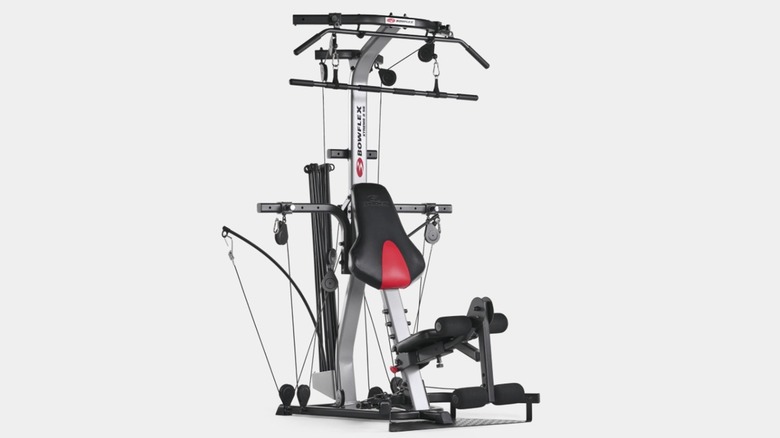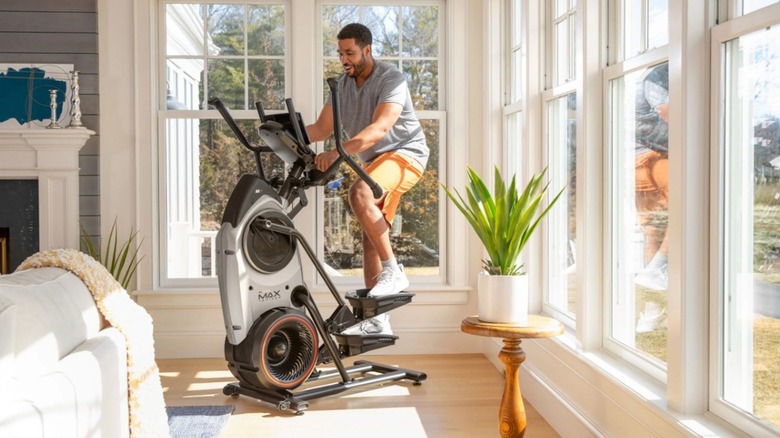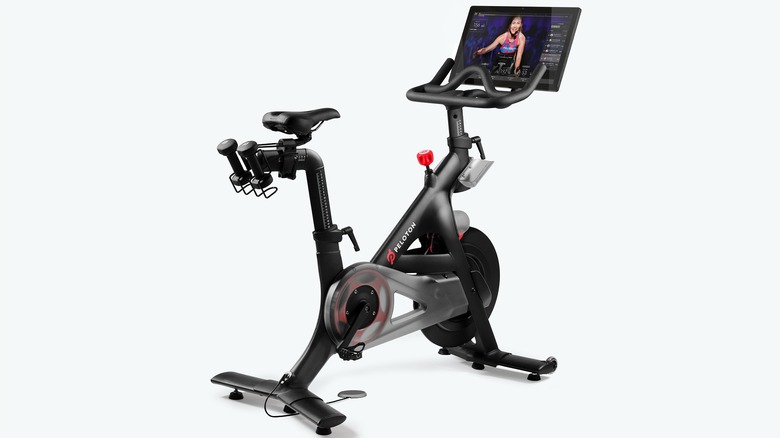What Happened To The BowFlex Workout Machine?
In 2024, the BowFlex company filed for bankruptcy following a near 90 percent dip in shares over the previous 12 months. A Taiwanese company, Johnson Health Tech, acquired most of its assets for over $37 million, though reps claim that the Bowflex product line still exists under the new owners. You can still go to the BowFlex website and purchase its latest home gyms, like the Xtreme 2 SE (which still features the iconic Power Rod system).
The 2020 pandemic was a boom period for home fitness manufacturers, as gyms everywhere were closed, but the increased sales didn't last long. Once restrictions were lifted, many exercise enthusiasts returned to fitness clubs. CEO Jim Barr cited the post-pandemic sales crash as one of the reasons BowFlex pursued a Chapter 11 filing. BowFlex isn't alone in its financial struggles, as even Peloton's post-pandemic dive continues. However, BowFlex's troubles arguably go much deeper, as some argue the company made a downturn well before 2020.
The company moved away from what made it stand out
BowFlex has been around since 1986, and is considered one of the first fitness companies to gain traction in the home gym market. Known for its innovative approach to resistance, swapping weights for power rods, you couldn't escape BowFlex infomercials in the 90s. These advertisements showcased innovative exercise hardware alongside fitness transformations, which proved to be a successful approach. Today, those trying to get into shape are spoiled with choices of many highly-rated smart exercise machines that can replace a gym subscription, but back in the day, there was truly nothing like a BowFlex.
However, in the 2000s, the manufacturer introduced a range of new exercise machines like treadmills and ellipticals, also labeled with the BowFlex brand. Adding products to the lineup can be a source of growth, but not at the expense of what made the company a household name. By March of 2009, BowFlex stock fell to a low of just 50 cents a share, from an all-time high of $45.45 in May of 2002, according to Stock Analysis. It didn't help the struggling fitness manufacturer that a giant competitor was about to gain momentum, with a cutting-edge social component and an evolved business model.
The rise of Peloton
A startup project, Peloton, sought to be the more interactive and social option for home workouts. While you could get a good full-body workout with a BowFlex home gym, it was predominantly a solo experience, whereas Peloton connected you to real-time training classes with others also working to get into shape. By 2016, fitness enthusiasts were able to attend as many real-time or on-demand classes as they wanted for a monthly subscription.
This subscription model enabled Peloton to not only sell exercise hardware (which was a one-time purchase), but also have customers regularly paying for exercise classes. While BowFlex was selling workout equipment, its interaction with the customer ended there until 2019, when the JRNY (Journey) app was launched. Recognizing the company's business model may be outdated, BowFlex released its own version of subscription-based training programs to compete with Peloton.
JRNY is less expensive for full access at $19.99 per month or $149 per year, versus $35 per month with Peloton+. However, recently Peloton has expanded its app offerings, with other training options (no exercise bike required) for just $16.99 per month. In addition, several other platforms have gained popularity, incorporating a social component into fitness apps for those who hate working out alone. Unfortunately for BowFlex, Peloton is still widely considered the best in terms of digital content, which likely was another factor that contributed to its decline, leading to bankruptcy.


